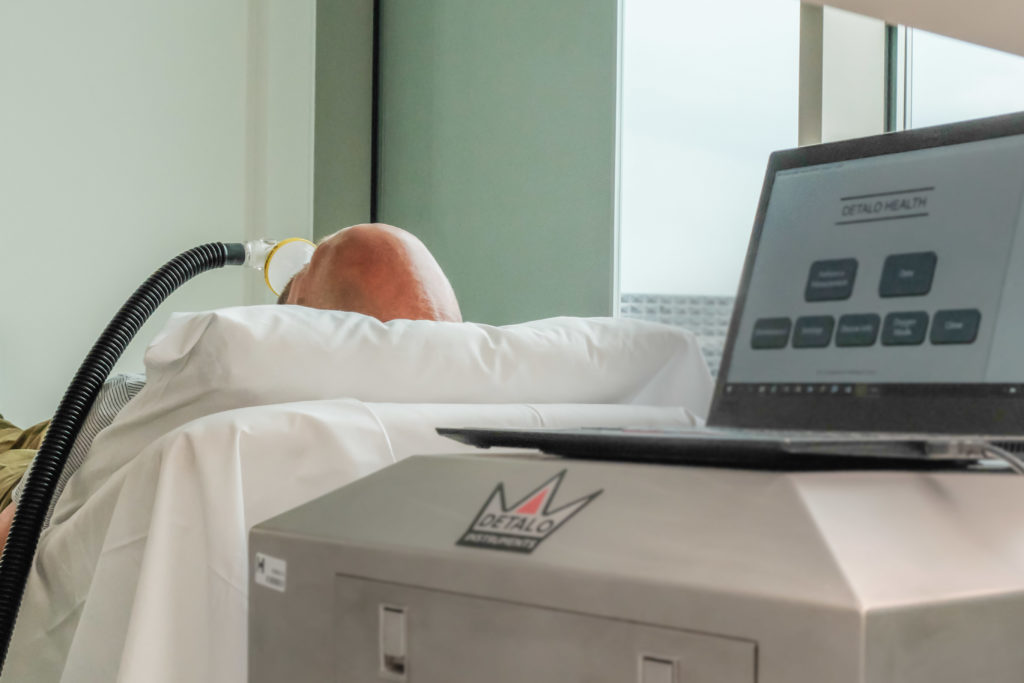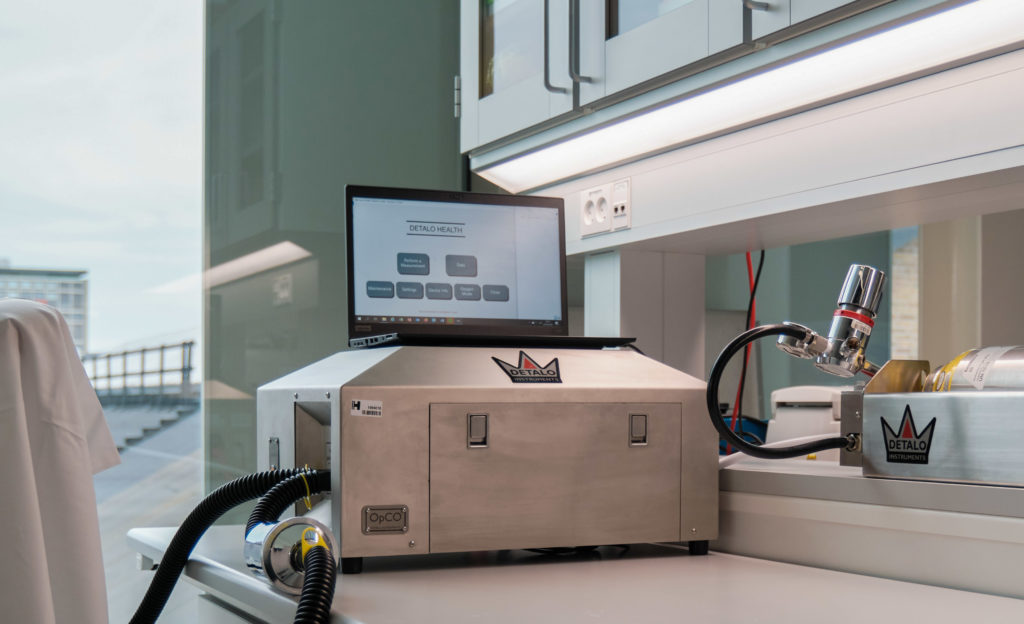Watch a Blood Volume Measurement
Introduction to the Blood Volume Measurement Procedure
A blood volume test is a procedure used to determine the total volume of blood, plasma, and red blood cells within the human body. This test can easily be performed with blood volume measurement devices from Detalo Health.
The video on this page demonstrates the complete test procedures. The test was performed in September 2021 on a healthy volunteer participating in a clinical trial. The measurement was completed in less than 15 minutes from the time that the volunteer was placed in the supine position and until blood volume results were ready at hand.
What are the steps of the procedure?
1. Test subject is placed in a supine position
The supine position is known to help the vascular mixing of CO in the bloodstream.
2. Patient information is entered into PC Software
Patient age, height, and weight are entered to help identify the correct CO dose.
3. Pre-test blood samples are obtained
The test can be done using capillary, venous, or arterial blood.
4. One minute of oxygen breathing is performed
Oxygen breathing ensures that the blood is fully saturated with O2 before the test.
5. Rebreathing is activated and CO is released
The rebreathing of CO is performed in a closed system in which oxygen is administrated if needed.
6. Rebreathing completed after 6 minutes
Various rebreathing times exist between 2 and 10 minutes.
7. Post-test blood samples are obtained after 10 minutes from rebreathing start
The last blood samples are obtained and analyzed in blood gas analyser. The patient is done.
8. Results are obtained
As soon as the pre- and post-test blood samples have been analysed, the measurement results are available in the PC software.

Blood Volume Measurement in 15 Minutes
Detalo blood volume analyzers determine total blood volume, red blood cell volume, and plasma volume in humans in a rapid, safe, and precise manner.
The Detalo Clinical™ is a CE-certified (MDR) medical device for routine blood volume assessment in standard clinical care. The device allows healthcare professionals to distinguish between true anemia and dilutional anemia and to determine if a patient is euvolemic, hypovolemic, or hypervolemic. Finally, it allows clinicians to evaluate and track the effectiveness of a treatment intended to change blood volume.

